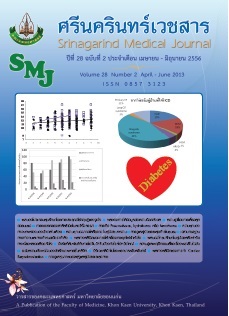Knowledge and Risk Behaviors of Ophisthorchis Viverrini Infection among the High School Students in Khonkaen Municipality
Keywords:
Knowledge and risk behavior, Ophisthorchis viverrini, high school studentAbstract
Background and objectives: Ophisthorchis viverrini infection is highly prevalence in the northeastern region of Thailand. The O. viverrinii infection is detected in individuals since in the age of 0-14 years old and increase four-fold in the age group 14-19 years. This study aimed to determine the knowledge and risk behavior of O. viverrini infection among high school students in Khon-Kaen municipality.
Methods: This study was a descriptive study and the study population were 6,508 students attending three high schools in Khon Kaen municipality. Cluster sampling was used to obtain a sample size of 507 students (i.e., 11 clusters = 11 classrooms). A self-administered questionnaire was developed by the researchers. The questionnaires comprised of three sections: 1) personal informations; 2) knowledge of O. viverrini infection; and 3) risk behaviors for O. viverrini infection. The results were presented as descriptive statistics and inferential statistics included Mann-Whitney U test and Kruskal Wallis test.
Results: The overall response rate was 94.1%. Most of the participants were females (65.8%). Median score of knowledge was 15 (IQR3) (total score=23) and 65.2% was moderate level. Besides, the highest score was regarding the prevention and the lowest was in the severity of O. viverrini infection disease. In the risk behaviors section, most of the participants never had their stool examination for O. viverrini egg (90.7%) and their most popular dishes were papaya salad that potentially has raw, fresh water fish, raw fish paste and pickled fish which is the primary vector for infection with O. viverrinii. 45. 8 % of the samples were undecided to quit of raw fish food, 37.8 % decided to quit of raw fish food and 14.4% still eating raw fish food.
Conclusions: Knowledge and risk behaviors of O. viverrini infection were moderate level. Most of the participants had never had a stool examination for the presence of O. viverrini egg and the most popular dish was papaya salad garnished with raw fresh water fish. Almost 50% of the samples were undecided to quit consuming raw fish food.
Keywords: Knowledge and risk behavior, Ophisthorchis viverrini, high school student



